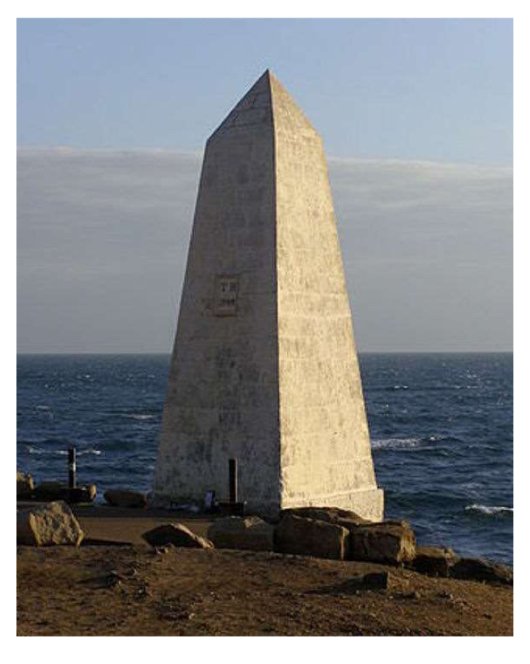Extract from my book ‘A Limey from Lyme’
https://mtouch.facebook.com/A-Limey-from-Lyme-398259050275290/?ref=bookmarks
Page 262
“Near my birthplace in the little village church of Affpuddle (in Dorset, UK) is a unique piece of American history. After the dissolution of the monasteries, the village became an estate of the Lawrence family, and the coat of arms on the north wall of the chancel is identical to that on the signet ring worn by none other than George Washington.
The stars and stripes, technically known as the bars and mullets, of the Washington family joined the crusader cross of the Lawrences after the marriage of Edmund Lawrence and Agnes de Wessington towards the end of the fourteenth-century, who were ancestors to the first President of the United States. More examples of the Lawrence coat of arms decorate Steeple church on the Isle of Purbeck and are thought to have been the inspiration for the American flag and the Great Seal of the United States.”
Read ‘A Limey from Lyme’ book review here:
http://www.travelwessex.com/Book-reviews.html
A travel autobiography in which I weave the history of the town of Lyme Regis, UK and that of the USA in and out of my travels through the many people and events that were the making of both places. Would make a great present and can be ordered directly from Olympia Publishers:
https://olympiapublishers.com/books/a-limey-from-lyme
Prologue:
“The citizens of the United States have a lot more freedom than the subjects of the UK”
This may seem a bold statement to make and possibly a hard one for the majority to accept, not just in the UK but possibly on both sides of the Atlantic. But I have a strong argument that this is indeed true based purely on the fact that George Washington was a Freemason.
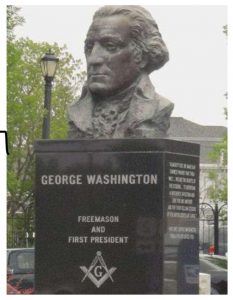
American Freemasonry is much more open than its UK counterpart and yet both originated from the same source possibly sometime after the English Civil War. Take for example the layout of Washington DC which was designed and built on the ideals, principles and beliefs of Freemasonry. It is common knowledge that if you project the Freemasonry symbol of the Square and Compasses over the Mall with the pair of compasses radiating from the Capitol Building and the Square on the Washington Obelisk then it aligns with the Lincoln Memorial.
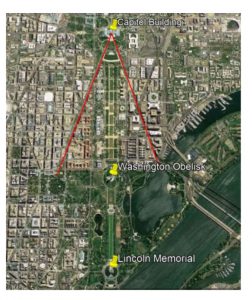
In Britain Freemasonry is very different, it is far more subtle and possibly even sinister compared to that of our ex-colonial cousins. For example if you project the Freemasonry symbol of the Square and Compasses over the Mall in London running from Admiralty Arch with the Square on Buckingham Palace and the pair of compasses radiating from Victoria Memorial, then the left-hand compass will pass through Wellington Arch which was moved to its present site in 1882–1883 and the original statue of Wellington moved elsewhere. Admiralty Arch was commissioned by the Freemason Edward VII (although he did not live to see its completion in 1912) and designed by Aston Webb, who also designed the Victoria Memorial and the new façade of Buckingham Palace on the other end of the Mall.
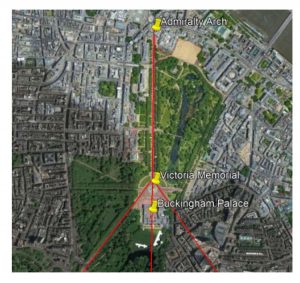

The Mall subtends to a bearing of exactly 235N on the compass (according to Google Earth) and this directs us right across to the south coast of England ending exactly on the Trinity House Obelisk (placed here in 1844) on the southern tip of Portland Bill.
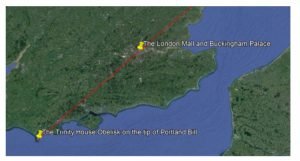

This alignment is no coincidence since if we do a similar projection on HRH Prince Charles’ model new town of Poundbury (Also the embodiment of his vision for Britain!) with the Compasses on Peverell Avenues East (about 124N) & West (about 228N) and the Square somewhere near Butter Cross. The bisector to the Pair of Compasses between the main building of the Royal Pavilion and the Royal Arch also aligns with the very same obelisk at 178.27N.
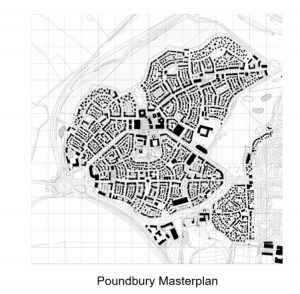
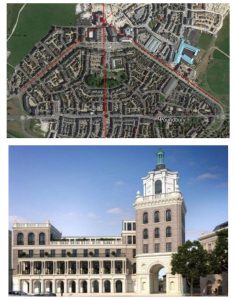 Now what is so important about this Obelisk? What is an Obelisk? and why should British Freemasons keep this knowledge a secret for the past 175 years? Are questions you will no doubt be asking yourselves?
Now what is so important about this Obelisk? What is an Obelisk? and why should British Freemasons keep this knowledge a secret for the past 175 years? Are questions you will no doubt be asking yourselves?
According to Wikipedia an obelisk is a tall, four-sided, narrow tapering monument which ends in a pyramid-like shape at the top. They originally played a vital role in Ancient Egyptian religion and were prominent in their architecture, placing them in pairs at the entrance to temples. Today they are used as a monument or landmark.
https://en.wikipedia.org/wiki/Obelisk
But in Freemasonry obelisks are used as landmarks for Ley-lines with the belief that these ‘antennae of energies’ will link the areas that have them erected back to a ‘central’ site of an ‘energy’.
https://www.quora.com/Why-are-obelisks-so-important-to-Masons
Absurd eh? But just for a moment let’s assume that Freemasons do believe this? Back at the Trinity House Obelisk on the tip of Portland Bill with compass bearings of 358.3N to the Royal Pavilion/Arch in Poundbury and 56.8N to the Victoria Memorial on the Mall. Again, project the Freemasonry symbol of the Square and Compasses over this and we now have a bisector at 27.5N which lines up exactly to the Column of Victory in the grounds of Blenheim Palace. Standing at 41 meters high it is crowned by a lead statue of the 1st Duke of Marlborough (also a Freemason) which depicts him dressed as a Roman general.
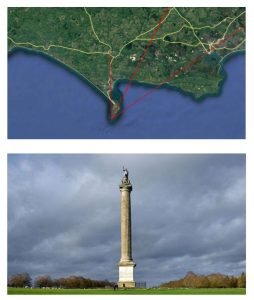 The ceiling roof of the entrance portico of Blenheim is decorated with six remarkable eyes. Three of these are blue and three are brown and all of them are masonic in their design. Does this indicate the junction point of Ley-lines and the central site of an energy according to masonic spiritual belief, the ‘Grand Central’ of a Matrix if you like?
The ceiling roof of the entrance portico of Blenheim is decorated with six remarkable eyes. Three of these are blue and three are brown and all of them are masonic in their design. Does this indicate the junction point of Ley-lines and the central site of an energy according to masonic spiritual belief, the ‘Grand Central’ of a Matrix if you like?
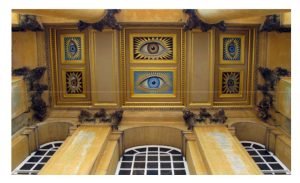
Further still Blenheim Palace, the birthplace of the well-known Freemason Winston Churchill is allegedly built upon Ley-lines and even Churchill chose to be buried at nearby Bladon because of another converging Ley-line.
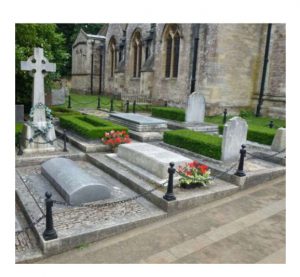 https://lostdudeistastrology.wordpress.com/2016/08/03/ley-lines-the-key-to-unlocking-the-matrix/
https://lostdudeistastrology.wordpress.com/2016/08/03/ley-lines-the-key-to-unlocking-the-matrix/
Extend the Trinity House Obelisk Ley-line (our bearing of 27.5N) from the Column of Victory and it passes through the burial site of Princess Diana in the grounds of Althorp Manor and onto another obelisk near Horncastle in Lincolnshire which is dedicated to the Duke of Wellington (another Freemason) erected in the same year as the Trinity House Obelisk and adjacent Waterloo Wood which was planted “from Acorns Sown Immediately After the Memorable Battle of Waterloo”.


Back at Blenheim if you Line-up the Column of Victory, the portico of Blenheim and Churchill’s grave you now have a second Ley-line that aligns exactly to another statue of Wellington this time in Aldershot. This statue was the original one that stood upon Wellington Arch and was moved to this spot after Edward VII realigned the Mall.

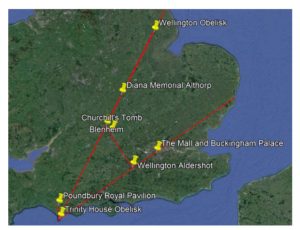
As you can imagine this is just the tip of the iceberg? since, it was fashionable to erect obelisks throughout the countryside in the 18th and 19th centuries, sometimes for the most obscure reasons as if trying to hide the real meaning for their construction.
Out of the many hundreds spread across the English landscape an obelisk was erected in 1739 on the outskirts of Little Shelford in Cambridgeshire for two friends who used to meet regularly there and agreed that when one of them died, the survivor should put up a monument to his friend’s memory. The master of the Bicester Foxhounds erected an obelisk in memory of his favourite hound “Lady” in 1812 and the one erected at Waltham Abbey, Epping Forest in the early 1700s, hidden in a woodland copse is also reputedly built in memory of a favourite horse and hound. Two were erected in Deer Park, Richmond by order of Mad King George III to help time the 1769 transit of Venus and another erected in bachelor’s Acre Park, Windsor for ‘Plum Puddings’ provided for the 50th Jubilee of the same king. Built on an iron age fort in 1786, south of the village of Moreton in Dorset another hides in woodland as if it’s trying to be forgotten, and finally another obelisk erected for no known reason whatsoever and a complete mystery, is the Cirencester obelisk erected about 1740 by the Earl Bathurst on part of a Roman quarry with a present-day plaque suggesting that the presence of obelisks in early English landscape gardens could be an expression of Masonic ideals!
For further information read my travel biography ‘A Limey from Lyme’ it would make an ideal present or travel companion (even for Freemasons!) and can be ordered directly on Amazon (including the Kindle version for just $6) or from olympiapublishers.com/books/a-limey-from-lyme and any major bookshop by quoting: ISBN9781848976498
Glen Herbert

